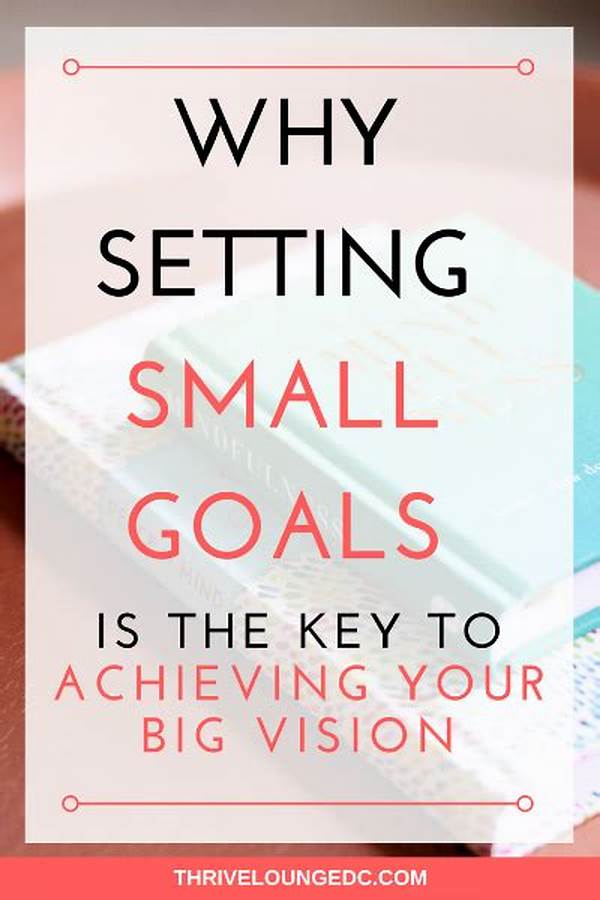I’m glad to help you create a series of interconnected articles and tips regarding “why setting small goals improves learning” using various writing styles. Let’s dive in.
Read More : How To Beat Burnout During Exam Prep
—H1: Why Setting Small Goals Improves Learning
In the fast-paced world that bombards us with overwhelming amounts of information, from social media to endless news articles, focusing on learning can feel like trying to drink from a fire hydrant. However, rather than feeling overwhelmed, there’s an effective strategy that works almost like magic: setting small, manageable goals. It’s an idea that seems deceptively simple but packs a punch in its effectiveness. You see, large objectives often loom in the background, intimidating us and sometimes causing a halt in progress. That’s where the magic of small goals comes in, acting like breadcrumbs on a path to success. They don’t just make the journey enjoyable, but they also tie into a psychological process that makes learning effective and efficient. It’s similar to chipping away at a large block of marble, each small goal revealing a bit of the masterpiece inside. So why setting small goals improves learning is not just a fancy concept, but a proven approach that has transformed countless overachieving learners into successful individuals.
Breakthrough research and testimonies support this strategy, showcasing how small achievable goals can create momentous transformations not only academically but also personally. So, whether you’re looking to master a new language, become proficient in coding, or ace your exams, setting small goals is your secret weapon. Let’s dive deeper into how and why this technique can elevate your learning game.
The Science Behind Small Goals
Setting small goals improves learning because these bite-sized tasks spark motivation. When the brain achieves a small goal, it gets a hit of dopamine—a feel-good chemical—fostering a sense of accomplishment and encouraging continuous progress. This chain reaction builds confidence and resilience, propelling learners forward with greater enthusiasm.
Furthermore, small goals help break down complex subjects. Imagine trying to eat an elephant in one bite—impossible! But bite-sized portioning changes the game. As learners tackle smaller segments, they can grasp details without feeling overwhelmed, gradually mapping out the larger picture in their minds.
H2: From Theory to Practice: How Small Goals Enhance Learning Outcomes
Incorporating small goals into daily learning routines shifts perspectives from daunting tasks to manageable challenges. Think of each goal as an episode in a series—satisfying and complete on its own, yet contributing to an entertaining narrative. Students and self-learners alike find satisfaction in ticking off these mini-milestones, creating a sense of progress and momentum.
—Setting Small Goals: The Blueprint for Learning Success
Understanding why setting small goals improves learning involves diving into what makes this strategy so effective. The importance lies not just in the goals themselves but how they fit into a broader, cohesive learning strategy.
Breaking Down the Journey
Each small goal represents a stepping stone, easing the learner into what could otherwise be an intimidating journey. By focusing on these incremental targets, learners avoid the dreaded burnout. This approach allows for adjustments and learning from each step, creating a tailored experience that adapts to your rhythm and pace.
Small goals serve as personalized checkpoints that provide an opportunity to reflect and realign, making learning both efficient and enjoyable.
H2: The Emotional and Rational Benefits of Small Goals
Surprisingly, small goals help improve emotional intelligence as well. Achieving them requires dedication, discipline, and self-compassion—qualities that strengthen emotional resilience. Rationally, they also train the brain to think critically, develop strategies, and execute plans with precision.
H3: Bringing It All Together for Learners
For students, these small goals can transform the overwhelming experience into an organized, step-by-step journey. It’s not about racing to the finish line but about appreciating the learning experience and truly understanding the acquired knowledge.
Setting small goals, then, becomes less about crossing finish lines and more about recognizing the progress on the journey. Focusing on these mini-milestones ensures that learners maintain a balance between steady progression and intellectual satisfaction.
—Goals That Align With Learning Success
Structuring Learning Through Small Goals
Small goals provide a framework to manage and master complex subjects with ease. By establishing consistent habits around these targets, learners shape a new paradigm in learning characterized by fluidity and adaptability. Importantly, why setting small goals improves learning can’t be overstated, as these goals form a foundation for lasting educational success.
Crafting personalized goals within this structure becomes an exercise in strategic planning, transforming the learning curve into an exciting journey rather than a soaring mountain. With each small achievement, learners are not only empowered with knowledge but also with a richer, more rewarding educational experience.
H2: How to Start Setting Small Goals
By setting these small, specific, and clear targets, learners pave the way for consistent achievement. Each mini-success builds a strong foundation towards understanding more complex ideas. It’s not merely about learning but evolving into a proactive, strategic learner.
H3: Transform Your Learning Approach Today
Now is the time to give it a try. Set your first small goal today and watch as the steps unfold. Embrace this efficient, proven path to boost your learning and see tangible improvements over time.
—9 Tips to Harness the Power of Small Goals
This collection of tips will guide you on your journey, ensuring each step you take is one towards improved learning and better understanding. Why setting small goals improves learning isn’t just a concept to discuss—these are tools to implement for enriched and efficient learning.
Embark on the Journey
In understanding why setting small goals improves learning, you’re embracing a method that promises not only educational advancement but also personal growth. This profound shift in approach nurtures a passion for learning and a methodical path to mastery, making knowledge acquisition an enriching, rewarding endeavor.
—
I hope these articles help you convey the importance and effectiveness of setting small goals in improving learning within a captivating and engaging framework. Feel free to let me know if you need further refinement or addition!


